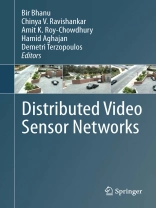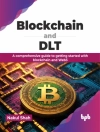Large-scale video networks are of increasing importance in a wide range of applications. However, the development of automated techniques for aggregating and interpreting information from multiple video streams in real-life scenarios is a challenging area of research.
Collecting the work of leading researchers from a broad range of disciplines, this timely text/reference offers an in-depth survey of the state of the art in distributed camera networks. The book addresses a broad spectrum of critical issues in this highly interdisciplinary field: current challenges and future directions; video processing and video understanding; simulation, graphics, cognition and video networks; wireless video sensor networks, communications and control; embedded cameras and real-time video analysis; applications of distributed video networks; and educational opportunities and curriculum-development.
Topics and features: presents an overview of research in areas of motion analysis, invariants, multiple cameras for detection, object tracking and recognition, and activities in video networks; provides real-world applications of distributed video networks, including force protection, wide area activities, port security, and recognition in night-time environments; describes the challenges in graphics and simulation, covering virtual vision, network security, human activities, cognitive architecture, and displays; examines issues of multimedia networks, registration, control of cameras (in simulations and real networks), localization and bounds on tracking; discusses system aspects of video networks, with chapters on providing testbed environments, data collection on activities, new integrated sensors for airborne sensors, face recognition, and building sentient spaces; investigates educational opportunities and curriculum development from the perspective of computer science and electrical engineering.
This unique text will be of great interest to researchers and graduate students of computer vision and pattern recognition, computer graphics and simulation, image processing and embedded systems, and communications, networks and controls. The large number of example applications will also appeal to application engineers.
表中的内容
Introduction.- Part I: Distributed Video Sensor Networks and Research Challenges.- Report on NSF/ARO/ONR Workshop on Distributed Camera Networks.- Part II: Video Processing and Understanding.- Motion Analysis: Past, Present and Future.- Projective Joint Invariants for Matching Curves in Camera Networks.- Multiple-view Object Recognition in Smart Camera Networks.- A Comparison of Techniques for Camera Selection and Handoff in a Video Network.- Tracking of Multiple Objects Over Camera Networks with Overlapping and Nonoverlapping Views.- Toward Robust Online Visual Tracking.- Modeling Patterns of Activity and Detecting Abnormal Events with Low-level Co-occurrences.- Use of Context in Video Processing.- Part III: Simulation, Graphics, Cognition and Video Networks.- Virtual Vision.- Virtualization and Programming Support for Video Sensor Networks with Application to Wireless and Physical Security.- Simulating Human Activities for Synthetic Inputs to Sensor Systems.- Cognitive Sensor Networks.- Ubiquitous Displays.- Part IV: Wireless Video Sensor Networks, Communications and Control.- Research Challenges for Wireless Multimedia Sensor Networks.- Camera Control and Georegistration for Video Sensor Networks.- Persistent Observation of Dynamic Scenes in an Active Camera Network.- Proactive PTZ Camera Control.- Distributed Consensus Algorithms for Image-based Localization in Camera Sensor Networks.- Conditional Posterior Cramér-rao Lower Bound and its Applications in Adaptive Sensor Management.- Part V: Distributed Embedded Cameras and Real-Time Video Analysis.- Video Web.- Video Web Dataset for Multicamera Activities and Nonverbal Communication.- Wide-Area Persistent Airborne Video.- Collaborative Face Recognition Using a Network of Embedded Cameras.- SATWARE.- Part VI: Distributed Video Networks – Applications.- Video Analytics For Force Protection.- Recognizing Activity Structures in Massive Numbers of Simple Events Over Large Areas.- Distributed Sensor Networks for Visual Surveillance.- Ascertaining Human Identity in Night Environments.- Part VII: Educational Opportunities and Curriculum Development.- Educational Opportunities in Video Sensor Networks.












